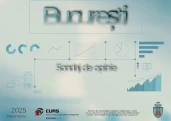The black iris (Iris nigricans), together with other varieties cultivated at the Plant Genetic Resources Bank for Vegetables, Floriculture, Aromatic Plants (BRGVLFPA) in eastern Buzau, is the subject of analyses by researchers, as a result of the fact that the flower bulbs contain a large amount of sugar, close in terms of concentration to that of classic plants, such as stevia, beet or sugar cane.
According to the researchers, irises have not been the subject of detailed studies in Romania, although the plant has a high potential in the food field. Along with iris, there are other plants from which products can be obtained that can successfully replace classic sugar, with benefits in the medical field as well.
"Sugar iris or sweet iris as it is popularly called is an iris from which a sweet substance is extracted, which can replace sugar. Unfortunately, it has been very little studied in Romania, in the 80s an alternative to sugar was tried and then several plants have been studied, including the sweet iris. As you know, sugar is extracted from plants, whether we are talking about sugar beet, sugar cane, but I think there are other plants that can replace those consecrated. We are talking about Jerusalem artichoke, where we have four homologated varieties and the fifth on its way, to which other plants are added, such as sweet iris, licorice or stevia acclimatized here at the Resource Bank," the BRGVLFPA manager Costel Vanatoru told AGERPRES.
The sugar in the iris is extracted from the roots of the plant, and the concentration can vary from one variety to another. With the support of several universities in the country, the Plant Genetic Resources Bank aims to establish for each variety the concentration of substances from which sugar can be produced.
"Sweet iris is appreciated for its sweet concentration at the level of tubers, tuberous roots. From the point of view of sugar concentration, iris is close to classic plants, whether we are talking about beet or sugar cane, and we hope that in a project we are working in with our colleagues from the University of Dunarea de Jos and those from the University of Bucharest to get to know better the biochemical composition of this plant," stated the manager of the Plant Genetic Resources Bank.
One of the rare but productive species from which researchers expect to obtain exceptional results is the black iris. In the not too distant future, the management of the institution hopes that the specialists will be able to analyze the flowers from the perspective of smells too, with the help of a gas chromatograph.

































Comentează